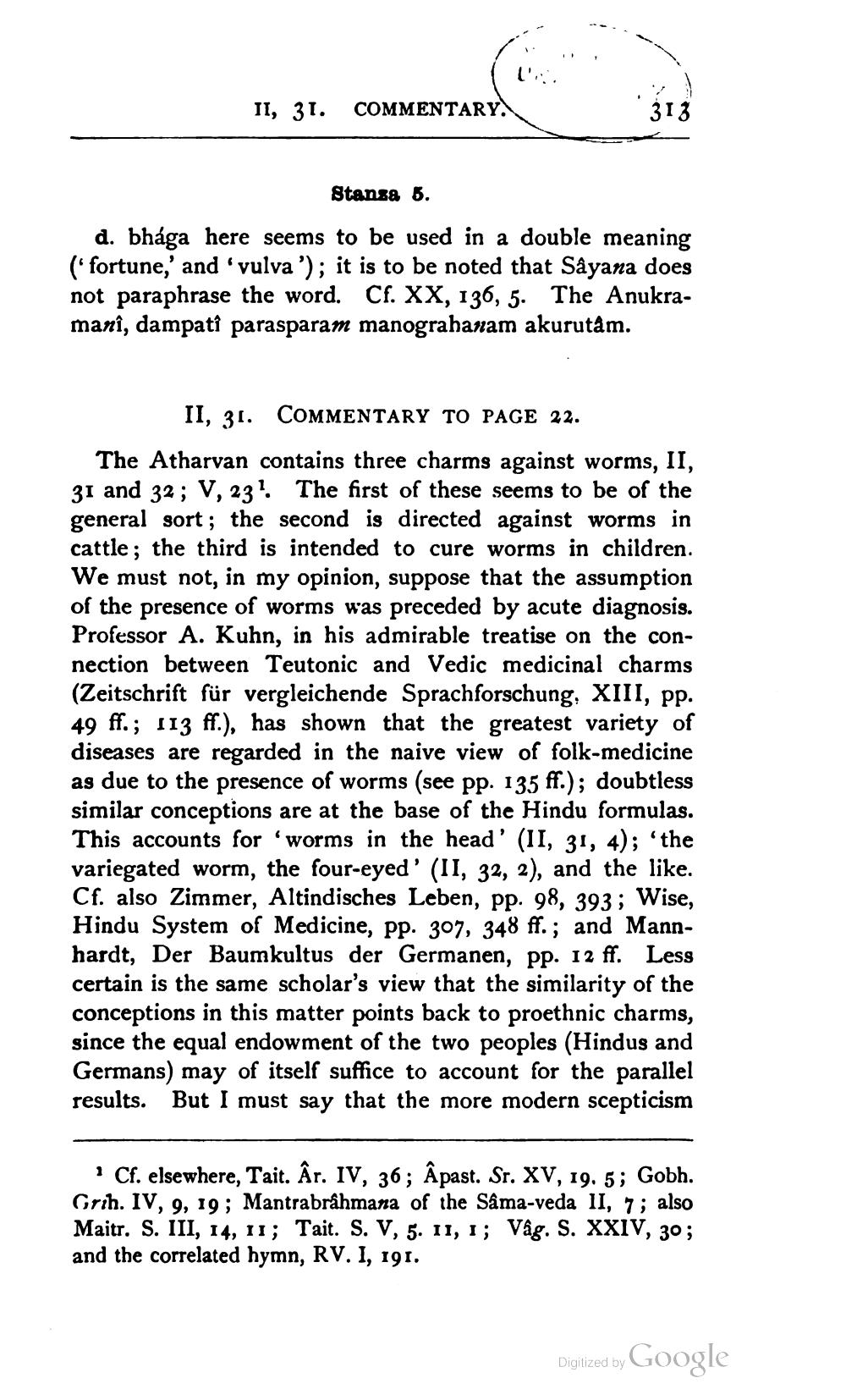________________
II, 31. COMMENTARY.
313
Stanza 5.
d. bhága here seems to be used in a double meaning ('fortune,' and 'vulva '); it is to be noted that Sâyana does not paraphrase the word. Cf. XX, 136, 5. The Anukramanî, dampati parasparam manograhanam akurutâm.
II, 31. COMMENTARY TO PAGE 22.
The Atharvan contains three charms against worms, II, 31 and 32; V, 23. The first of these seems to be of the general sort; the second is directed against worms in cattle; the third is intended to cure worms in children. We must not, in my opinion, suppose that the assumption of the presence of worms was preceded by acute diagnosis. Professor A. Kuhn, in his admirable treatise on the connection between Teutonic and Vedic medicinal charms (Zeitschrift für vergleichende Sprachforschung, XIII, pp. 49 ff.; 113 ff.), has shown that the greatest variety of diseases are regarded in the naive view of folk-medicine as due to the presence of worms (see pp. 135 ff.); doubtless similar conceptions are at the base of the Hindu formulas. This accounts for 'worms in the head' (II, 31, 4); 'the variegated worm, the four-eyed' (II, 32, 2), and the like. Cf. also Zimmer, Altindisches Leben, pp. 98, 393; Wise, Hindu System of Medicine, pp. 307, 348 ff.; and Mannhardt, Der Baumkultus der Germanen, pp. 12 ff. Less certain is the same scholar's view that the similarity of the conceptions in this matter points back to proethnic charms, since the equal endowment of the two peoples (Hindus and Germans) may of itself suffice to account for the parallel results. But I must say that the more modern scepticism
1 Cf. elsewhere, Tait. Âr. IV, 36; Âpast. Sr. XV, 19. 5; Gobh. Grth. IV, 9, 19; Mantrabrâhmana of the Sâma-veda II, 7; also Maitr. S. III, 14, 11; Tait. S. V, 5. 11, 1; Vâg. S. XXIV, 30; and the correlated hymn, RV. I, 191.
Digitized by
Google




